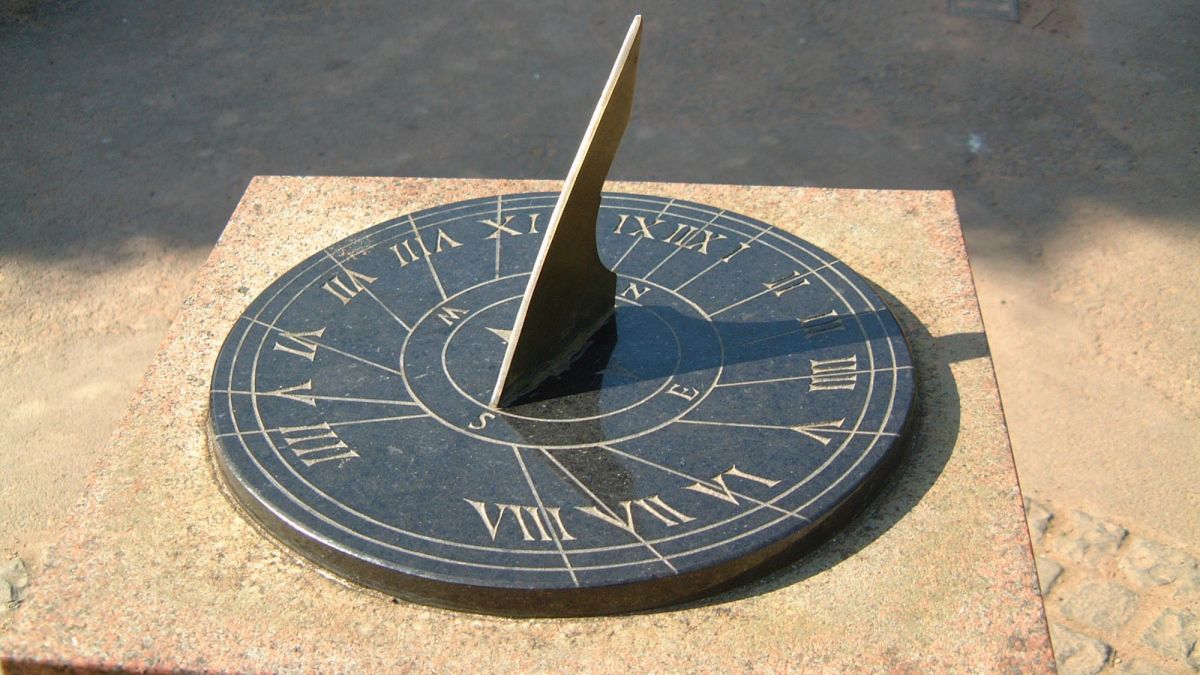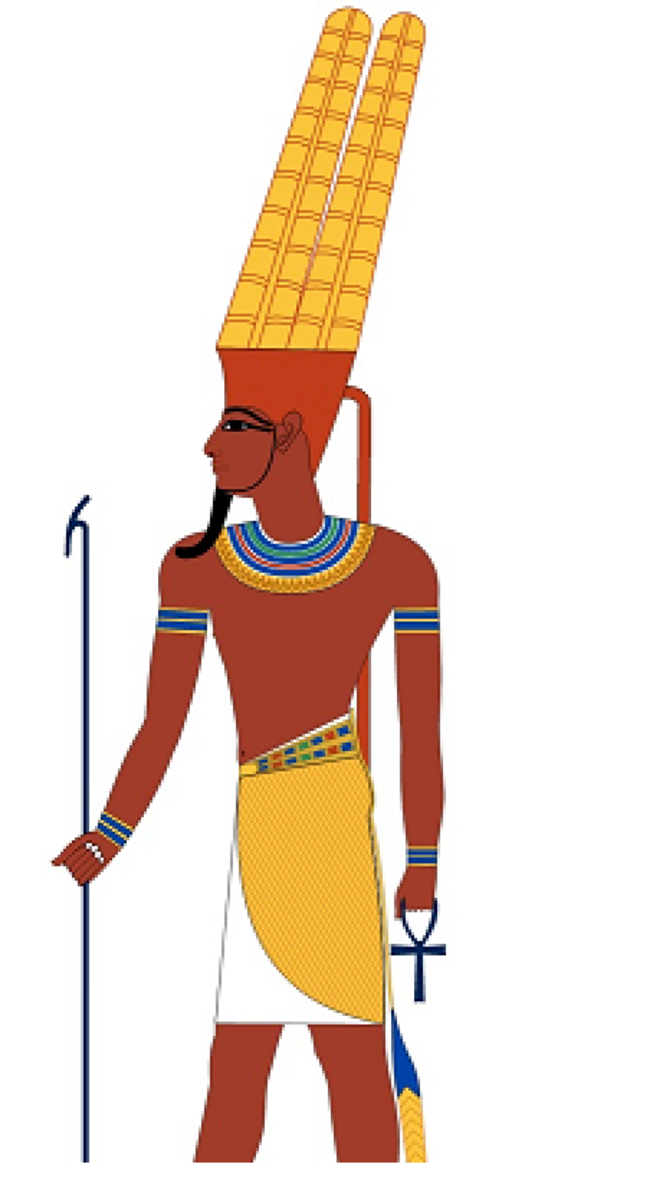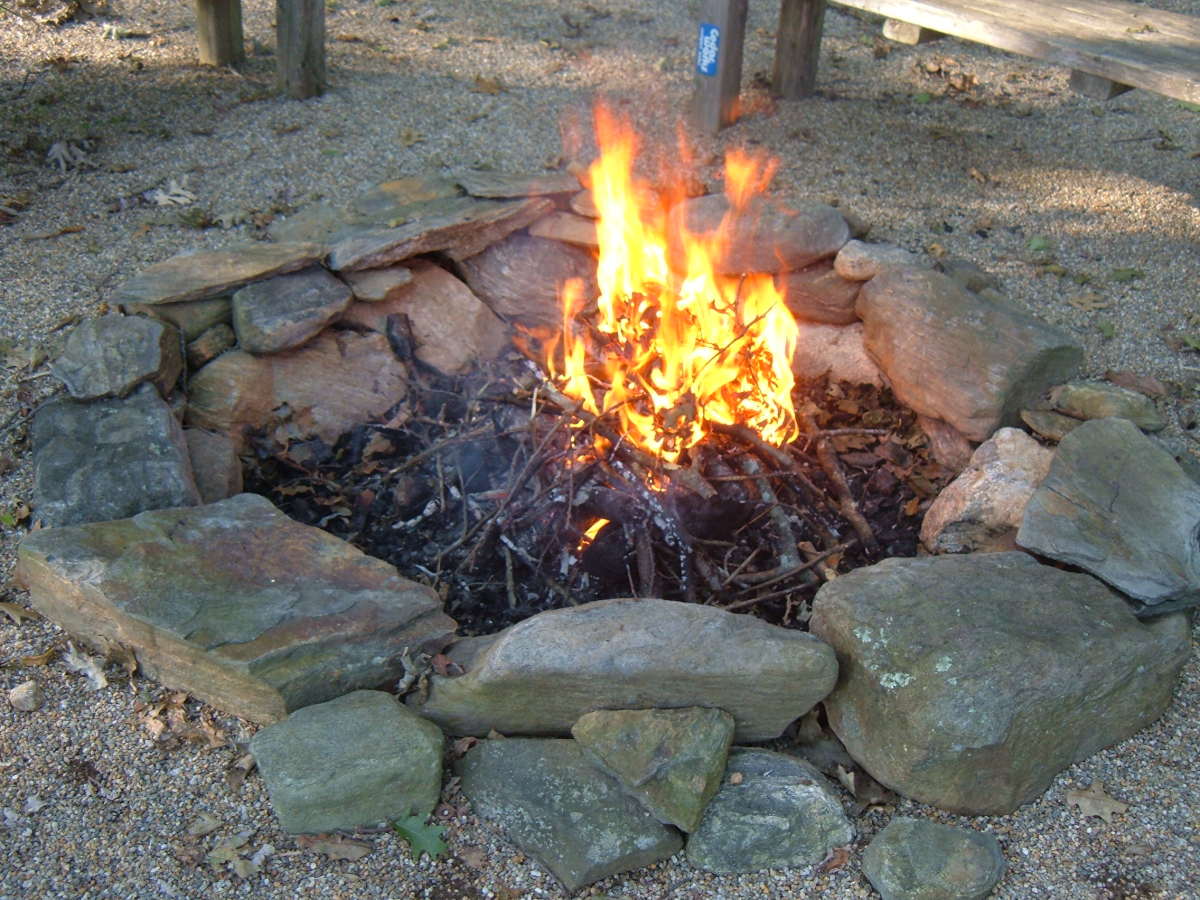Sundials - The Measure of Time
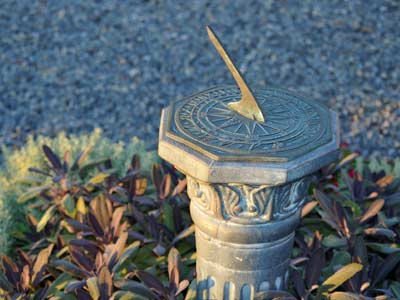
Sundials have been in use in one form or another since humans first noticed the sweeping of the shadows as the sun makes it's journey across the sky each day. Sundials bring a sense of timelessness to our gardens, yet conversely marking the passage of time. A sundial invites us to linger while the sun shines, watching the shadow creep across it's face as we ponder the way we pass our hours.
Sundials are an ancient blend of science and art that became popular in the sixteenth century when they were widely made. When the sun-dial was first introduced into England it was customary to inscribe mottoes under them, reminding the passers-by of the flight of time and the brevity of human life.
The dial on Thornby Church, in Northamptonshire, conveys the following lesson:
“Mark well my shade and seriously attend
The common lesson of a silent friend,
For time and life speed rapidly away,
Neither can you recall the former day,
You are not able to recall the past,
But live thou this day as if it were the last.”
Thousands of sundials have graced our gardens since that time and they come in a wide variety of forms.
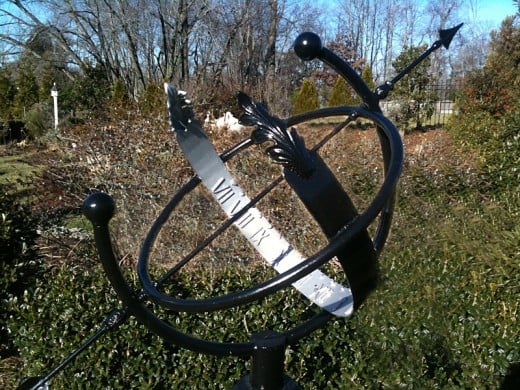
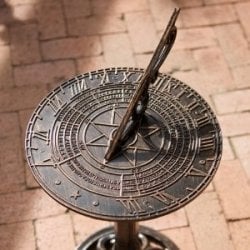
Types of Sundials
Amillary Sundials: Some sundials imitate the amillary-sphere, an ancient astronomical instrument based on the Aristotelian view of the universe. In that view the earth was the centre of the universe. It was the centre of a sphere of fixed stars that rotated around it every 24 hours. the sun, the moon and the planets were also fixed on transparent spheres with the earth at the centre.
These sundials are simpler than true armillary spheres and their metal rings usually represent only the outer sphere of fixed stars.
Horizontal sundials: Simpler to understand and beloved through the centuries is the flat faced sundial often set on a pedestal in a sunny clearing. Made of stone or metal the horizontal dial looks like a lop-sided clock face. Fixed upon it like a sail, the gnomon, which is usually made of metal, casts the "time" shadow across the dials face. This is what most people think of when you talk about sundials, a horizontal sundial set in a pretty English garden.
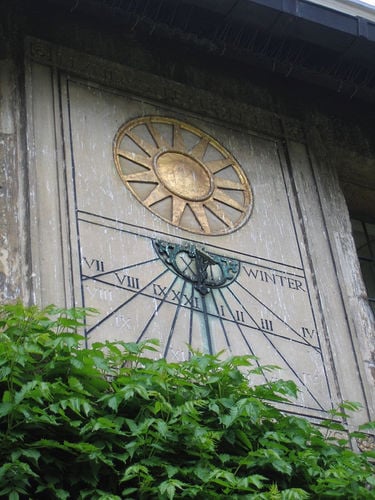
Equatorial sundials: These sundials have a dial plate that is tilted at an angle parallel to the equator. The gnomon is then set at right angles to the dial plate, parallel to the earth's axis.
Vertical sundials: Often attached to the side of a building, vertical sundials were historically placed on churches. In the middle ages in Britain. These sundials were literally scratched onto the walls of churches, probably to show the hours of church services. A vertical sundial above the entrance to your home gives visitors a memorable welcome. Vertical sundials can also cover up flaws in the wall behind.
Garden Obelisk: The garden obelisk is a stunning dramatic feature in any garden. Though they cannot accurately tell the time and they have no gnomon, the shadow cast by an obelisk can mark important dates. Ground markers can be inserted around an obelisk to indicate family birthdays, for example.
Beautiful Sundials From Amazon
How To Set Up A Sundial
In the northern hemisphere the sundial should be set so that your gnomon points directly north, using a small compass. Compasses, of course, point to magnetic north, so sticklers for accuracy may want to adjust their sundial accordingly to true north (denoted by the north star - not a compass). In the southern hemisphere the gnomon must point to the south pole. You can also site your sundial, at exactly noon, local time, so that it also reads the time as exactly noon.
To find the geographic poles draw a few concentric circles on level ground on a sunny day. Place a straight stick (like a piece of dowel) upright in the exact centre of the circles. The stick must be vertical.
In the morning when the tip of the stick's shadow just touches the circle on one side, mark that point. In the afternoon when the tip of the stick's shadow just touches the same circle on the opposite side, mark that point. Now draw a line between the two points and then draw a second line that bisects the first (at right angles). The second line points north-south.
Don't expect to set your clock by your sundial. Our clocks measure mean (average) solar time but our sundial measures apparent solar time. They should match exactly on the following four days of the year: April 15, June 15, Sept 1 and Dec 24 - not counting the complications of daylight savings.
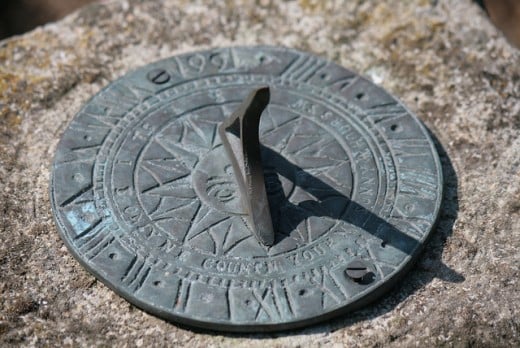
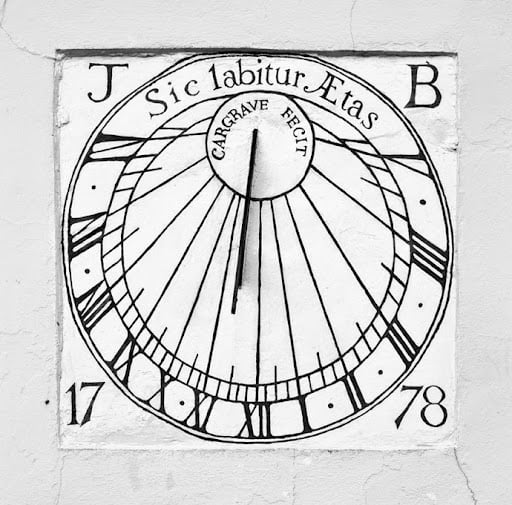
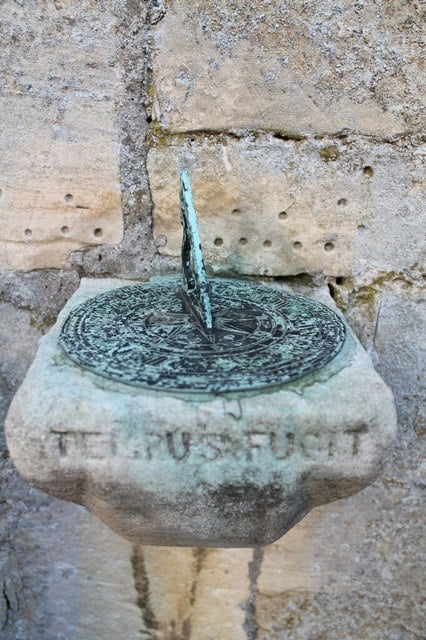
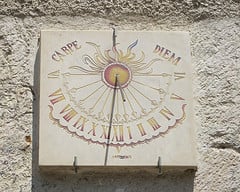
Mottoes For Sundials
Mottoes on sundials are a minor art form in themselves. Some of them appear to look on the more pessimistic side of life, but others are more heart warming so there are plenty of options to suit every temperament. There are companies that will custom make your sundial to your own designs, including your choice of motto. Here are some popular mottoes I have found:
Keep your face towards the sun and the shadows will fall behind you.
No minute gone comes ever back again, take heed and see ye nothing do in vain.
Come along and grow old with me; the best is yet to be.
The greatest happiness in life is to love and to be loved - Victor Hugo
Time spent laughing is time spent with the gods (Japanese proverb)
Time flies like an arrow, fruit flies like a banana - Groucho Marks
Time and tide wait for no Man
In memory, love lives forever.
I mark the time, dost thou?
Amidst the flowers I tell the hours.
Time passes as a shadow.
Brief is life but love is long
And brief the sun of summer
Come what come may,
Time and the hour runs through the roughest day. (Macbeth)
How do I love thee? Let me count the ways.
I love thee to the depth and breadth and height my soul can reach.
Thou by the dial's shady stealth may know
Time's thievish progress to eternity
(Shakespeare sonnet 77)
Serene I stand among the flowers
And only count life's sunny hours
To me dark days do not exist,
I'm a brazen faced old optimist
From quiet homes and first beginning,
Out to the undiscovered ends,
There’s nothing worth the wear of winning,
But laughter and the love of friends
Dance as though no one is watching you,
Love as though you have never been hurt before,
Sing as though no one can hear you,
Live as though heaven is on earth.
To see a world in a grain of sand,
And a heaven in a wild flower,
Hold infinity in the palm of your hand
And eternity in a hour - William Blake
I am a sundial, turned the wrong way round. I cost my foolish mistress fifty pounds.
Latin Mottoes
- Carpe diem (seize the day!) or a longer version....
- Carpe diem quam minimum credula postero (seize the day and place no trust in tomorrow)
- Tempus fugit. (Time flies)
- Fugit hora - carpe diem. (The hour flies — seize the day)
- Utere, non numera. (Use the hours, don't count them.)
- Sic labitur aetas. (Thus passes a lifetime)
- Vita fugit, sicut umbra (Life passes like the shadow)
- Tempus vincit omnia. (Time conquers everything)
- Amor vincit omnia (Love conquers all)
- Sempre amicis hora (Always time for friends.)
- Vivere momento. (Remember to live)
- Sol omnibus lucet. (The sun shines for everyone)
- Fruere hora. (Enjoy the hour)
- Fruere hora (Guard the hour)
- Vivere momento. (Remember to live)
- Horas non numero nisi serenas (I count only the happy hours)
- Draco dormiens nunquam titillandus (Don't tickle a sleeping dragon)
- Nunc est bebendum (Now is the time to drink)
- Me transmitte sursum, caledoni! - (Beam me up, Scotty!)
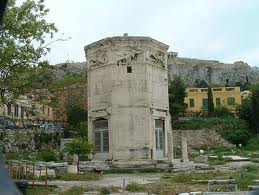
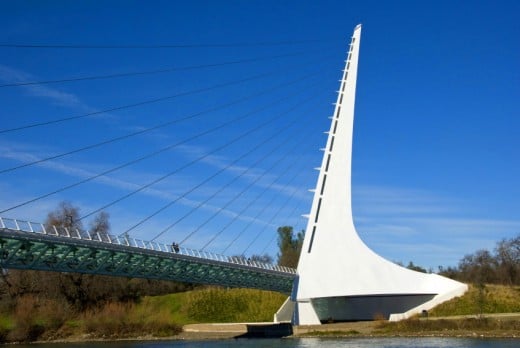
Famous Sundials
There are hundreds of famous and amazing sundials in the world. Here are just a few contemporary and historical sundials, showing something of the huge diversity.
Tower of the Winds: This tower Is also called "horologion" meaning timepiece. It is an octagonal marble clock tower found in Athens and is believed to have been built around 50 BC. The tower structure features a combination of sundials, a water clock and wind vanes. It bears a relief sculpture of a wind god on each face. Underneath each sculpture is a sundial, each engraved differently for the direction.
The Sundial Bridge: The beautiful Sundial Bridge spans the Sacramento River at Redding, California. It was designed by the world renowned Spanish architect and engineer, Santiago Calatrava, and was his first free-standing bridge. The bridge is a working sundial with a 217 foot high fin casts a shadow on a huge garden-lined dial plate at the north end. The McConnell Foundation funded the majority of the bridge’s $23 million cost.
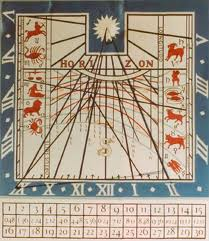
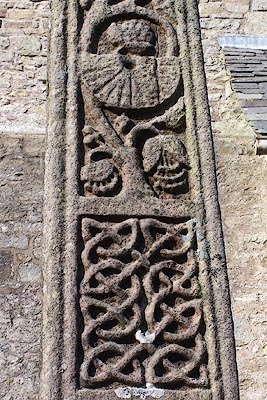
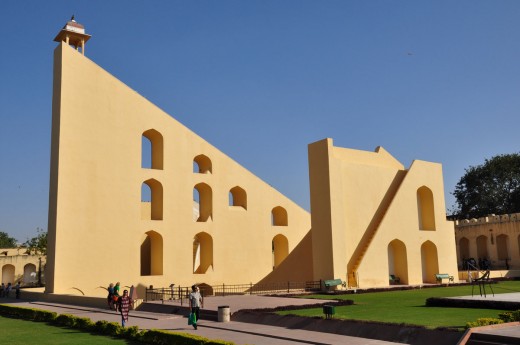
Queens' College sundial
The famous sundial dial at Queens' College, Cambridge University was originally painted in 1642. Some say Sir Isaac Newton designed the dial but this is unlikely as he was born in 1642! As well as the time, this vertical sundial shows the signs of the zodiac, the sun's altitude and direction, the time of sunrise and the length of the day. It also enables time telling by moonlight.
Bewcastle Cross sundial: This is the oldest existing sundial in Britain and was carved in the late 7th century. A fan shaped vertical sundial is carved near the top of a richly decorated Anglo-Saxon cross.
Samrat Yantra
The Samrat Yantra in Jaipur, India is the largest sundial in the world at over 27 metres high, and is capable of telling the time, day or night, with an accuracy of about two seconds.. In 1728 the Maharaja Sawai Jai Singh II commissioned the building of an observatory, called the Jantar Mantar, as part of the newly founded city of Jaipur. The reason that the Samrat Yantra and the other instruments at Jantar Mantar are so enormous is that Jai Singh wanted to obtain the greatest accuracy possible. Because of the Samrat Yantra's massive size, its shadow can be seen moving at the rate of about 6 centimetres per minute.
Sombor, Serbia: On the south facade of the Parochial Palace in Sombor, Serbia there is a famous sundial built nearly 200 years ago. It's the only sundial in a few hundred miles radius. It was placed in 1852 on the initiative of Jovan Cokor, the headmaster of the Teacher-Training School. He used to punish his students really hard, resulting in the students’ mutiny and his leaving Sombor. The sarcastic inscription on the sundial is written in Serbian and Hungarian and roughly translated says ‘one of these is your last’.



